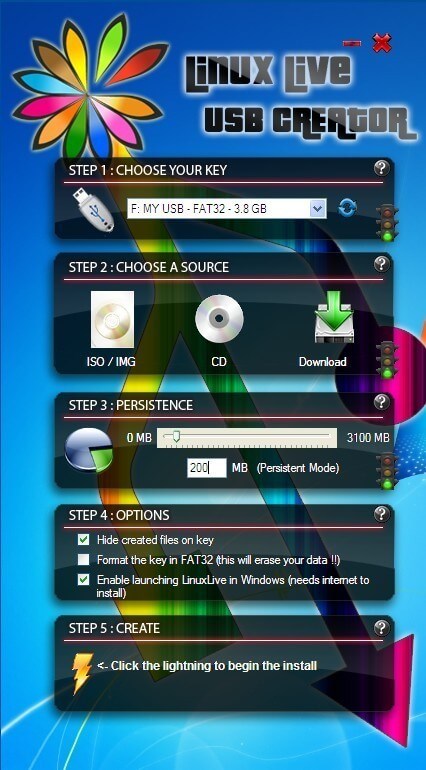

- #Ubuntu gparted live usb create partition install
- #Ubuntu gparted live usb create partition full
- #Ubuntu gparted live usb create partition iso
- #Ubuntu gparted live usb create partition windows 8
So I figured alright, something went awal while making the partitions, so I booted up gparted once again.
#Ubuntu gparted live usb create partition install
My 50 gig first partition I had planned to install windows on showed up normal and the 300 gigs of space left in the extended partition did as well, the rest showed up as raw. Then I found they were, and they weren't.
#Ubuntu gparted live usb create partition windows 8
I had planned to install windows 8 on the first partition, then ubuntu and kubuntu on the other 2.Īfter I finished partitioning my drive with gparted, I booted into windows vista to make my bootable windows 8 usb to install it with, I also decided to check to make sure all my partitions were working properly. Mkusb is a grub2 type bootable flash drive maker that uses a FAT32 partition for boot, a write only ISO9660 partition for the OS, a ext4 casper-rw partition for persistence and a NTFS data partition accessible to both Linux and Windows.About a day or so ago I used Gparted live cd to create 3 NTFS primary partitions on my external 500 gig Goflex and one extended with 2 logical partitiones.
#Ubuntu gparted live usb create partition full
Syslinux 6.03 offers full support for NTFS, (and many other fs), so there is no longer a 4GB persistent file size limit required to satisfy FAT32. Persistent partitions have not worked with syslinux type installs such as SDC, UNetbootin, Rufus, etc since 14.04, (unless the partition is located on a separate drive).

Menu label ^Try Ubuntu without installingĪppend file=/cdrom/preseed/ed boot=casper cdrom-detect/try-usb=true persistent noprompt floppy.allowed_drive_mask=0 ignore_uuid initrd=/casper/initrd.lz quiet splash -Īppend file=/cdrom/preseed/ed boot=casper only-ubiquity cdrom-detect/try-usb=true persistent noprompt floppy.allowed_drive_mask=0 ignore_uuid initrd=/casper/initrd.lz quiet splash -Īppend boot=casper integrity-check cdrom-detect/try-usb=true persistent noprompt floppy.allowed_drive_mask=0 ignore_uuid initrd=/casper/initrd.lz quiet splash. PS: If you don't want to use UNetbootin and you are using the "Startup disk creator" in Ubuntu then you need to do some edits to your syslinux/txt.cfg file as follows: default live Persistence (via the persistent kernel option) should already be set up if you used UNetbootin, so safely eject the USB and you're ready to go! Mount this partition (here, sdb1), and delete /casper-rw. Once everything is done, the final step is to delete the small casper-rw file created on the vfat partition you installed the live CD on, so that the large ext4 casper-rw partition is used instead.
#Ubuntu gparted live usb create partition iso
Use UNetbootin to write your chosen live CD ISO to the first (vfat) USB partition. So if you have the issue then use live GParted CD for partitioning. Also note that GParted 0.18.0 seems to have problems partitioning the USB stick. You can use your own USB creator, but you should then modify the below steps appropriately. Note: I prefer to use UNetbootin because it makes editing the syslinux configuration easy.


 0 kommentar(er)
0 kommentar(er)
